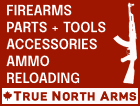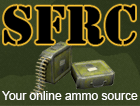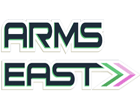The Pentagon ordered 110,000 Glock pistol for the Iraqi security forces including , police , security , and military so the plant in Smyrna Georgia was about to hire 400 more employees and put on another shift . They cancelled the deal and bought the pistols from Glock Austria over this very issue . The UN actually cancelled the deal because of the new mandated marking , registration and end user certificates . The guns were UN marked in Austria and then registered four times . First time , US Military , second time , Gov't of Iraq , third time , unit or force they were being transfered to and fourth , to the individual they were issued to . Half went to stores but are registered and half were issued and documented to individual police , security or military and God help that guy if his pistol shows up anywhere else . Many leave their Glocks in their locker or hidden at home and carry an undocumented gun because it's far less trouble if something goes wrong . Same when the Canadian army tried to transfer 1,500 ancient old worn out M-16s to the Afghan army . It took 4 years to do the UN documentation , transfer , registration and end user certificates . In the budget of two weeks ago Trudeau has already allocated the money for the new gun registry .
|









 Reply With Quote
Reply With Quote



